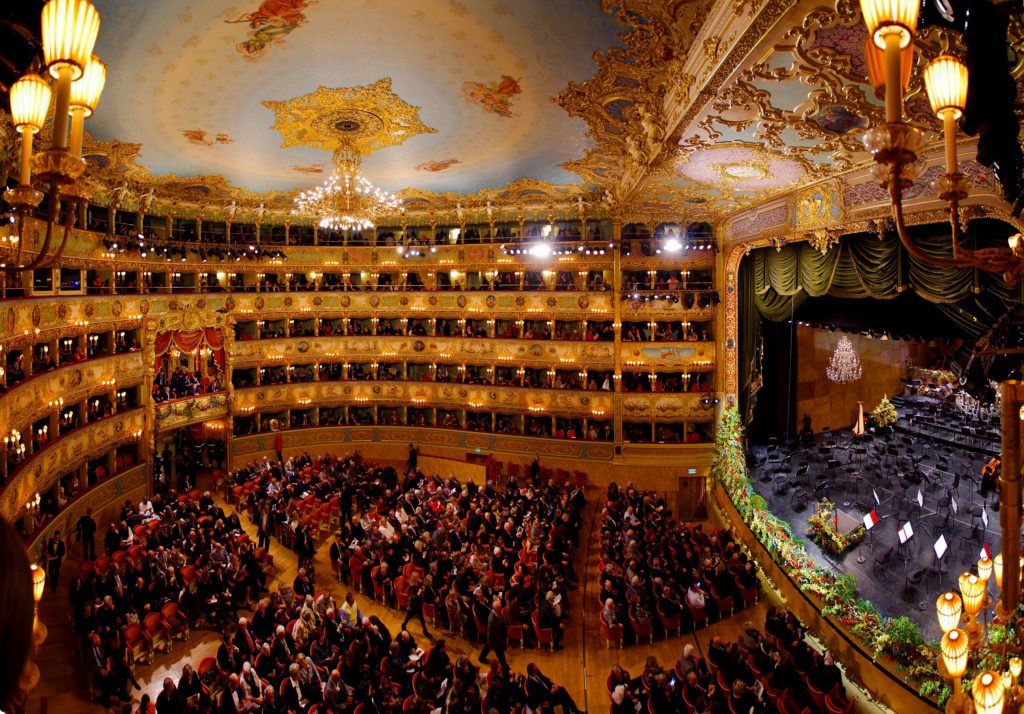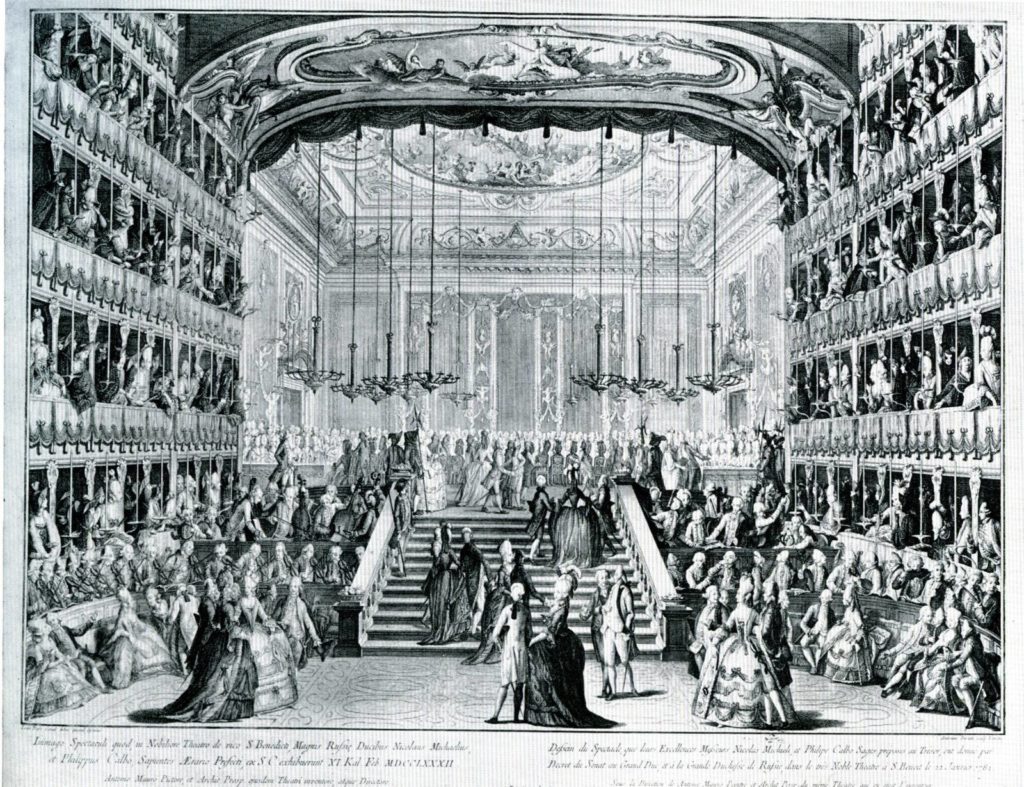
We mark the opening on May 16, 1792 – 230 years ago today – of Venice’s principal opera house, the Teatro la Fenice, meaning the “The Phoenix Theater.”
Excepting, perhaps, the magnificent phallus that is the Washington Monument, dedicated as it is to “The Father of Our Country,” rarely – if ever – will a building be better named than La Fenice, which has risen from the ashes three times.
Background
The first public opera house – the Teatro San Cassiano – opened in Venice in 1637. Public opera quickly proved to be tremendously popular and immensely profitable, and Venice – already the tourist capitol, the Las Vegas of the European world – had yet another recreational activity to offer its endless stream of visitors. By 1700, there were some twenty opera theaters operating in Venice, cranking out operas the way Hollywood cranked out movies in the pre-television glory days of the 1930s and 1940s.
As the popularity of public opera spread first across Italy and then all of Europe, so opera theaters were built across Europe. No longer the singular purveyor of public opera, many of Venice’s opera houses closed, so that by 1770 only five remained. Of those five, the most plush and the most prestigious (in terms of its productions) was the Teatro San Benedetto, which had opened in 1755.

In the seventeenth century, eighteenth century, and first half of the nineteenth century, theaters of every stripe burned down with alarming regularity. This should come as no surprise, as candles and oil lamps – open flames – were employed in prodigious number to light both the stage and the house. Some of these flammables were placed in rows at the front edge of the stage with mirrored reflectors behind them to light the stage. This row of lights was called the footlights. Other such lights illuminated the stage from above and from the sides; these were called, respectively, border lights and striplights. Boys were employed to scamper around during a performance, regulating the lights and cleaning up the candle wax that dripped, ran, and created smoke.
Given that these theaters were built from wood covered in fabric and papier-mâché, and were occupied – during a performance – by musicians, performers, stagehands, and such constantly scurrying around on stage and backstage, it is difficult to imagine a less “fire safe” environment outside of an active volcano. Frankly, it’s something of a miracle that any theater survived at all before the use of reliable gas lighting around 1840. …
Continue reading, only on Patreon!
Become a Patron!Listen on the Music History Monday Podcast
Podcast: Play in new window
Subscribe: Apple Podcasts | Spotify | Pandora | iHeartRadio | RSS | More
